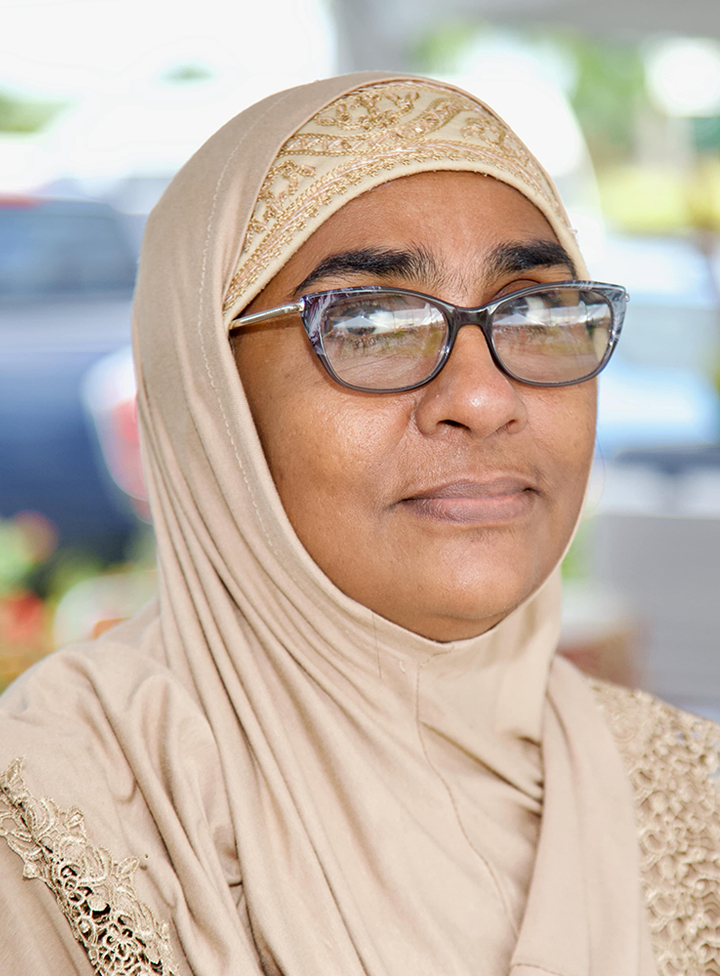- Home
- MICS
Know more about MICS
Key data on women and children in Trinidad and Tobago.
Quick glance at MICS 6
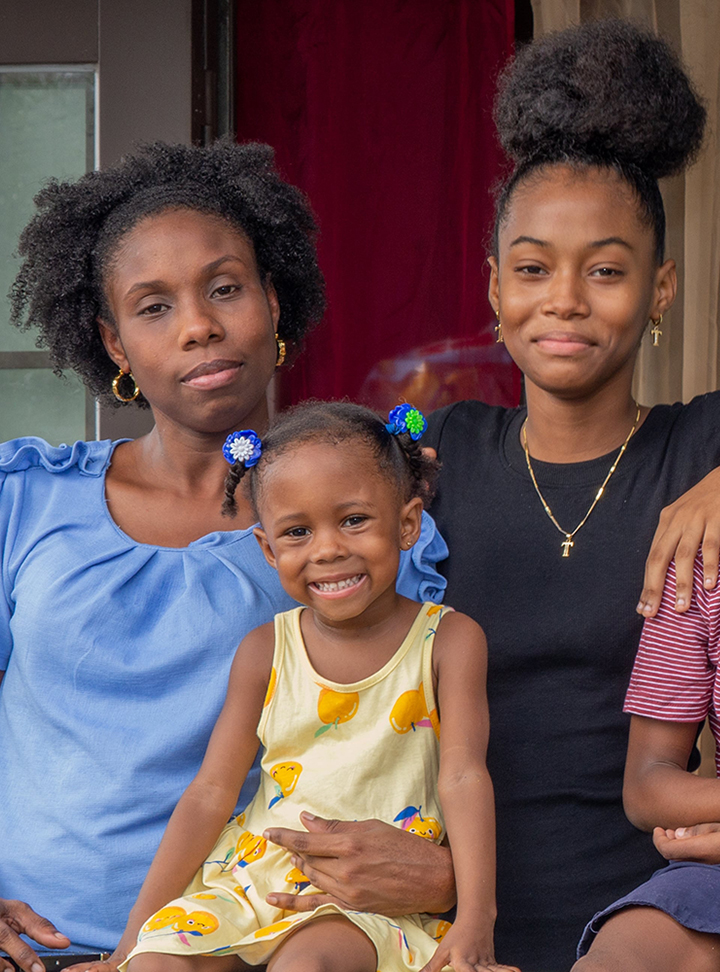
Household Characteristics
- In Trinidad and Tobago, the MICS had an overall response rate of 92%, while the response rates for the targeted women and children sub-populations ranged from 94% to 96%.
- The population pyramid showed that the largest proportion of the population was in the 35-39 year age group for both sexes.
- Only 11 out of 100 households had a child below the age of 5 years, while 29 out of 100 households had no member below the age of 50 years.
- A little over 3 in every 5 households were headed by males (61%).
- Overall, 63% of household heads and 90% of all mothers/caregivers had at least an upper secondary education.
- The percentage of women who were never married/in union was 45%, while the percentage who were married/in union at the time of the survey was 42%.
- Just over half the children aged 0-17 years lived with both biological parents, another 35% lived with their mother only while 6% lived with neither biological parent.
- Only 25% of women, 10% of children aged 5-17 years and 17% of children under 5 years had health insurance.
- On a weekly basis, almost a quarter of all women 15-49 years (24%) were exposed to the newspapers, radio or television.
- 97% of all households had someone who owned a mobile telephone, 84% had internet access at home and 61% had someone who owned a computer or tablet
- 58% of women possessed ICT skills.
- Disparities were seen between women with higher education (30%) than those with primary education (13%) in exposure to mass media and internet use.
- Possession rates varied by wealth, with the women in the richest households (100%) almost twice as likely to have internet and more than three times as likely to own a computer or tablet (92%) than women in the poorest households (53%) and (30%) respectively.
- In the ERHA, 52 out of 100 women used the computer in the last 3 months while in the NCRHA, it was 74 out of 100.
- Additionally 45% in ERHA had ICT skills compared to 66% in NCRHA.
Survive
- The Under-5 Mortality rate was 15 per 1000 live births over the past 5 years preceding the survey, while the Infant Mortality rate stood at 14 per 1000.
- Therefore, of the children who died before the age of 5 years, 93% died before the age of 1 year.
- The Neonatal Mortality rate was 10 children per 1000 live births. Among the children who died before age 1 year, approximately 71% died within the first month of life.
- The Under-5 mortality rate for boys was slightly higher (16) than girls (13).
- The Under-5 mortality rate among children born to mothers with primary education was 2.7 times as high as children born to mothers with upper secondary education (27 vs 10 deaths per 1000 live births).
- Disparities in the regions indicated that the NWRHA had the lowest prevalence of neonatal and under 5 deaths, at 2 and 7 per 1000 live births respectively, compared to the TRHA which recorded 21 and 30 deaths per 1000 live births for the same indicators.
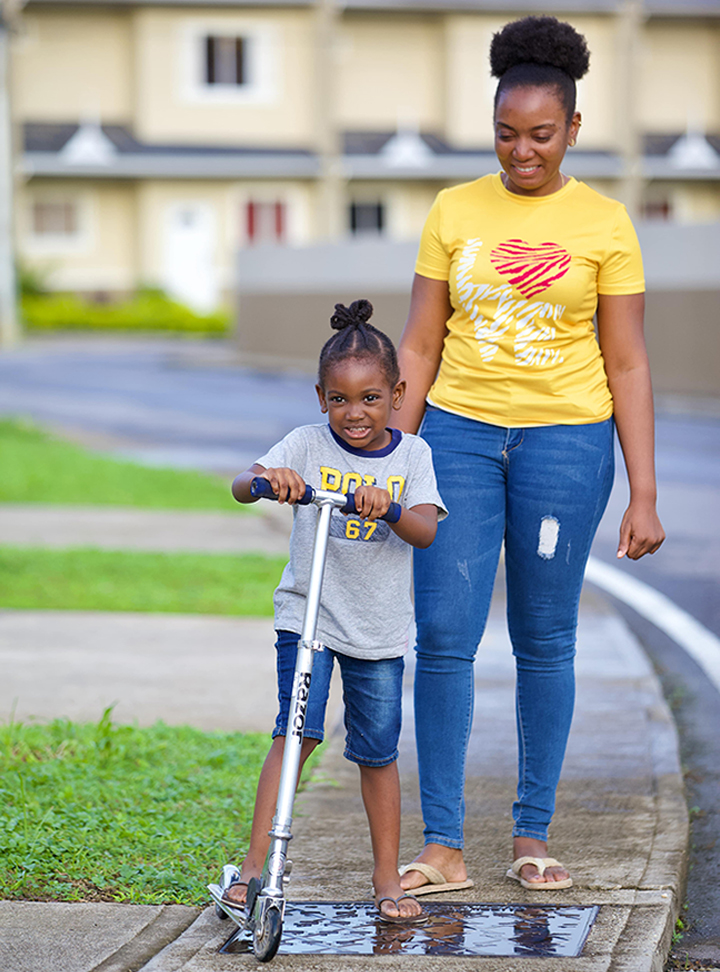
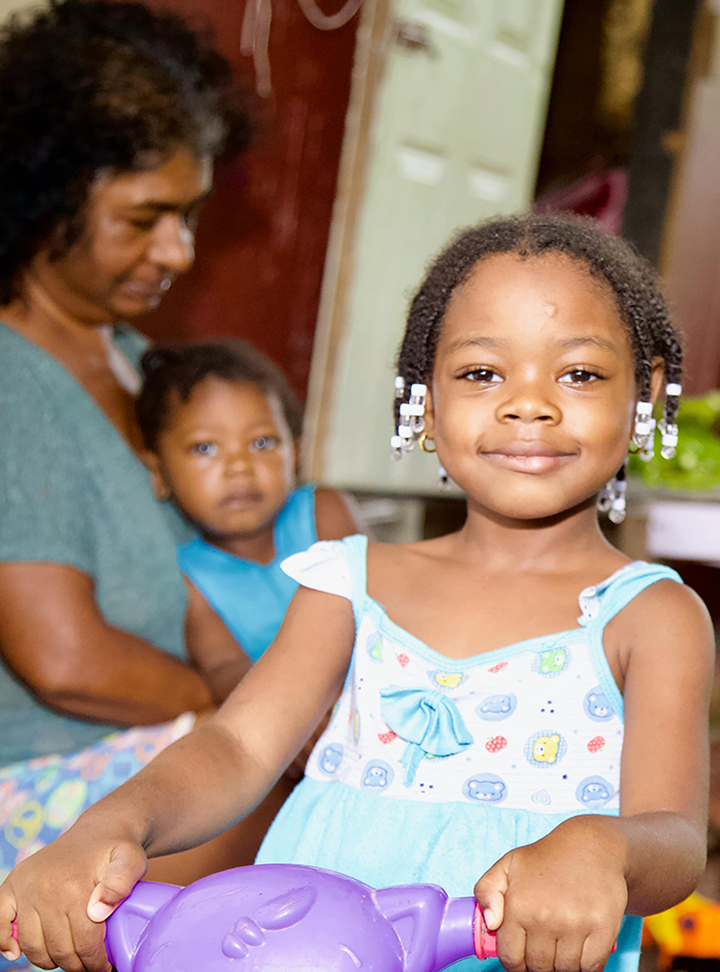
Thrive – Reproductive and Maternal Health
- The adolescent population aged 10-19 years represented 14% of all household members.
- Among unmarried adolescents, the unmet need for contraception was the highest at 53%.
- Adolescent girls 15-19 years with upper secondary education (27%), in rural areas (24%) and those among the poorest (41%) were at a higher risk of early child bearing than those with higher education (0%), in urban areas (21%) and those in richer households (9%).
- Overall, almost 1 in every 4 girls 15-19 years (24%) consumed alcohol in the past month prior to the survey and 12% used tobacco at some point in their lives
93% of expectant mothers aged 15-49 years made at least one visit to a prenatal health facility, 98% in rural areas, 90% in urban areas. - 88% of children ages 10-14 years demonstrated foundational reading skills, while 77% demonstrated foundational numeracy skills.
- There was a widening gap in the attendance rates between boys and girls as children ascend the education ladder. The difference grows from 1 percentage point in favour of the boys, to 12 and 14 percentage points behind the girls, from primary to lower and upper secondary school.
- 67% of girls 15-19 years engaged in computer related tasks to promote their ICT skills.
- 63% of all children 10-14 years were disciplined in a violent manner in the month leading up to the survey.
- Child labour, in terms of both economic activities was highest among 5-11 year olds.
- Adolescent girls reported that they experienced the most discrimination based on their gender (9%).
- Children aged 15-17 experienced depression (4%) at twice the rate of children aged 10-14 years (2%). Both age groups experienced anxiety more than any other form of functional difficulty.
- The total fertility rate was 1.3 births per woman, though higher in rural areas (1.5) than in urban areas (1.2), higher in TRHA (1.8) than in SWRHA (1.2) and more than double among the poorest households (2.0) than the fourth quintile.
- Adolescent birth rate among the poorest households was 41 babies per 1000 women versus 2 babies per 1000 women among the richest wealth quintile.
- Trends in early childbearing declined with age, as the percentage of women that had a child by age 18 declined from 10 % of 45-49 year olds to 4% among 20-24 year olds.
- The onset of early child bearing by age 18 among lower secondary educated women was 46% compared to 1% among those with higher education.
- Almost 4 out of 10 married women (36%) used modern or traditional methods of contraception.
- Contraception use was highest among women with higher education (35%) and those belonging to the richest households (34%).
- Little over half (51%) of married women were satisfied with modern methods of contraception for family planning, ranging from 39% in TRHA to 57% in the SWRHA.
In general 7 out of every 10 women (70%) aged 15-49 years had comprehensive knowledge of HIV. - Knowledge and testing were higher among women 15-49 years (70 %) and (14%) as opposed to younger women aged 15-24 years ( 63%) and (10%) respectively.
- Women ages 15-24 years with higher education were 17 percentage points more likely to have comprehensive knowledge about HIV prevention than women with upper secondary education.
Across all regions, HIV testing was highest among adults 25-29 years and lowest in the 15-19 age group. - In the SWRHA only 10% of women aged 15-49 years reported having been tested in the last 12 months prior to the survey, in contrast to twice as many (20%) in both the NWRHA and TRHA.
- Only 9 out of 100 pregnant women were HIV-tested during their prenatal care. (they were offered the HIV test, accepted, received results and post health information or counselling related to HIV).
- 4 in every 100 adolescent girls and young women aged 15-24 years began having sex before their 15th birthday.
- 3% of teenage girls aged 15-19 reported having sex with a partner 10 years or older in the last year.
- Condom use among young women 15-24 years who had sex in the last 12 months with more than one partner was higher (44%) than women 15-49 years (46%).
- Sex debut before 15 years among young girls and young women was most prevalent in TRHA (6%), above the national average (4%).
- Sex before age 15 among young women was the highest for those living in rural areas (4%), women or girls with a lower educational background (10%) and for those belonging to the poorest wealth quintile (8%).
Thrive – Child Health, Nutrition and Development
- 93% of expectant mothers aged 15-49 years made at least one visit to a prenatal health facility, 98% in rural areas, 90% in urban areas.
- 3 out of every 4 expectant mothers (75%) had their first prenatal visit within the first 4 months of pregnancy, while 2% had no prenatal care during the pregnancy.
- 99% of all births occurred in a health facility and were attended by a skilled attendant.
- Among women who gave birth, 97% had provided a blood sample, had their blood pressure checked and had their urine specimen taken. 89% were also tested for HIV. However, only 23% reported to have received the neonatal tetanus protection.
- 3 out of every 10 pregnant women gave birth through caesarean section (30%). Birth through caesarean section was 28% among mothers 20-34 years.
- 38 in 100 newborns received skin to skin contact immediately after birth and 83 in 100 of them were bathed after 24 hours.
- Almost half of newborns (48%) during the 2 years before the survey were put to breast within 1 hour of birth.
- Early initiation of breast feeding was more than twice as prevalent among mothers who gave birth through vaginal means (58%) than those who had a caesarean section (24%).
- 3 in every 10 babies (30%) were exclusively breastfed.
- Less than one in every four babies (24%) were not introduced to solid or semi-solid foods from 6 – 8 months.
- While 76% were fed with sufficient frequency, only 45% of babies diets met the recommended minimum diversity (5 out of 8 food groups).
- 45% of babies continued with breast feeding at 1 year that declined to 35% at the 2-year mark.
- Early initiation of breast feeding was practiced most in TRHA (62%) and least in the NWRHA (39%). Minimum diet diversity was highest in the NCRHA (53%) and lowest in the NWRHA (35%).
- Disparities on minimum diet diversity existed and were highest among the fourth richest (52%), most educated (49%), female (49%) and rural (47%) babies than they were among the poorest (37%), those with upper secondary education(41%), male (42%) and urban babies(44%).
- The parent/guardian of 1 in 4 children (25%) aged 0-59 months who had diarrhoea, sought advice from a health facility or provider. Advice was mainly sought from either public (18%) or private facility (15%).
- Those in the urban areas (37%) were more than twice as likely to seek help than in the rural areas (17%).
- During the episode of diarrhoea, a little more than half the children (51%) ate about the same or more amount of food. Conversely, almost 75% of the children drank about the same or more liquids during that time.
- Only 22% of children received ORS as a treatment for diarrhoea. That percentage declined drastically to 3% when ORS is combined with zinc as a treatment for these children.
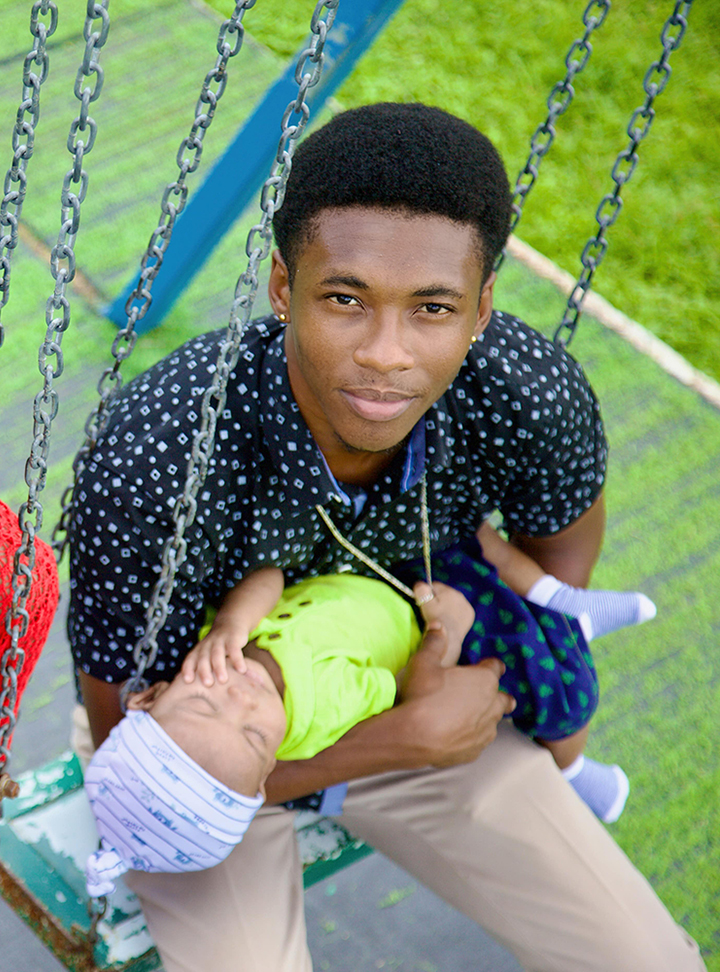
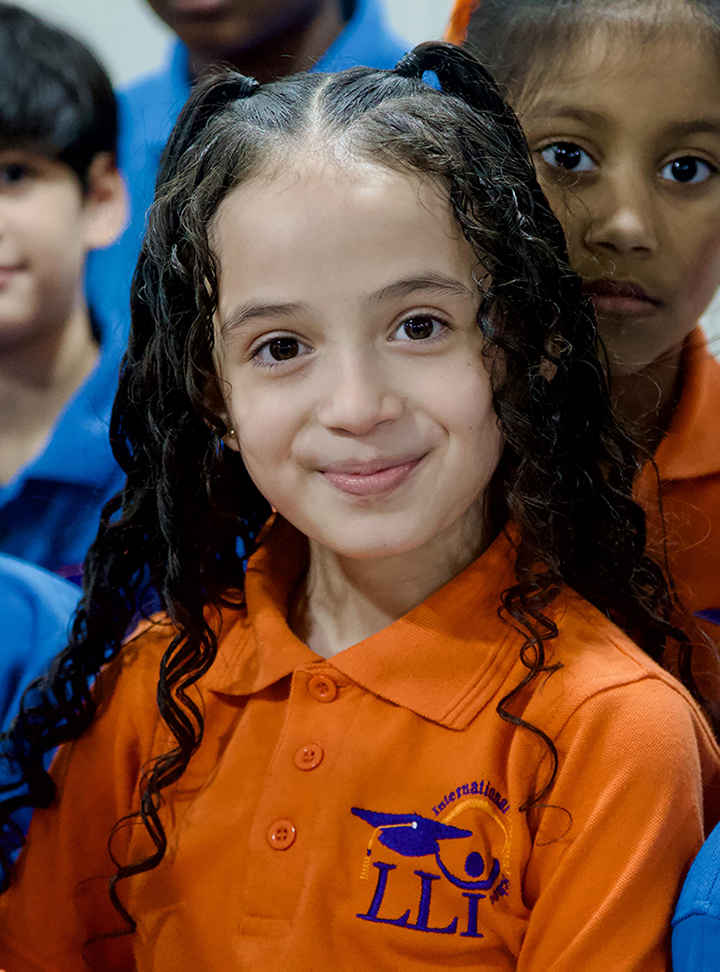
Learn
- Mothers engaged in activities that promote learning and school readiness (73%) with children 2-4 years almost three times as often as fathers (26%).
- Overall, nearly 6 out of 10 children aged 3-4 years (59%) attended an early childhood education programme, with a greater percentage of boys (62%) attending than girls (57%).
- Attendance was highest among children from urban areas (63%), children from TRHA (78%) and children from the richest wealth quintile (74%).
- The percentage of children under 5 years that were left alone or were under the supervision of other children younger than 10 years of age was highest in NCRHA (3%) above the national average (2%).
- Overall, 65% of children under 5 years had 3 or more books to read at home.
- Levels of ECDI (developmentally on track in literacy-numeracy, physical, social emotional, and learning domains) varied mostly based on the mother’s education and the wealth quintile of the household.
In Trinidad and Tobago, the levels of foundational reading skills among children 7-14 years was 66%. - Over 7 out of 10 children (74%) of age for grade 2 to 3 were able to read 90% of words in a story correctly.
- While 86% of children of age for grade 2 to 3 were able to do number discrimination, only 45% had appropriate numeracy skills.
- 83% of girls displayed foundational learning skills as compared to the boys at 77%. Also 69% in foundational numeracy skills compared to 63% for boys.
- Intuitively the proportion of children displaying both numeracy and reading skills increased by grade of attendance and age. Children in Standard 5 were 25% more likely to have foundational reading skills than those in Standard 2. Also, numeracy skills among children aged 8 years was 42% compared to 68% among the 10 years olds.
- Greater inequalities were observed in foundational reading skills and numeracy skills according to the education of the mother, whether the child has a functional difficulty and the wealth quintile of the household. For instance, children with no functional difficulty were 20 percentage points more likely to demonstrate foundational reading skills, while numeracy skills for children whose mother had higher education was 75% compared to the 42% of those whose mother had lower secondary education.
- Children living in the TRHA region had the lowest percentages of children demonstrating both foundational reading skills (72%) and numeracy skills (45%).
- At least 7 out of 10 children received help with homework regardless of area, sex of child and wealth quintile.
- The percentage of children who read books or are read to at home was 94% among the richest households compared to 75% in the poorest households.
- Approximately 87% of the parents received a report card from the school.
- Although 80% reported that the school has a governing body open to parents, only 68% of parents attended a meeting called by the school management, 20% attended a school celebration or sport event and 66% of the parents met with teachers to discuss their children’s progress.
The attendance rate in organized learning programs 1 year before the age of enrolment in primary school was 89%, up from 59% for children one year younger. - In T&T attendance at primary school was 93%, with little variations across the sex of the child, area and wealth quintile.
- While primary education attendance rates for boys was higher than girls, that pattern reversed for the lower and upper secondary levels.
- Net attendance rates at lower secondary level showed the wider gap between females (84%) and males (72%) and between the richest (87%) and the poorest (66%) households.
- The widest gap for attending upper secondary school was noted between children in the fourth (86%) quintile and in the poorest (64%) households.
- TRHA region had the highest attendance rates in primary school and upper secondary school, while the NCRHA had the highest attendance rate for lower secondary school.
- The ERHA had the lowest attendance rates in upper secondary school at 67%.
- Almost all children completed the primary education level with 99%, but this progressively decreased as children ascended the education ladder with 95% and 85% respectively.
- The disparities in completion rates grew as children transitioned from primary to lower secondary and on to the upper secondary education level. Completion rates were higher for females children living in urban areas and those belonging to the richer wealth quintiles compared to their male peers, children in rural areas and the poorest households.
- The out of school rate for males (14%) was almost 3 times that for females (5%) with respect to the children who were in lower secondary school but at risk of dropping out (over-age for grade by 2 or more years).
Protected from Violence and Exploitation
- In Trinidad and Tobago, 96% of children under the age of 5 years were registered, 89% had a birth certificate and 7% were registered but had no birth certificate.
- Birth registration was lowest among children aged 0 -11 months ( 81%), but was notably increased for all other age groups under the age of 5 years ( 98-99%).
- Birth registration among children was highest for children whose mother’s education was lower secondary (100%) compared to the mothers with primary education (92%).
- The TRHA region had the highest percentage of registered births at 98% compared to the lowest in the NCRHA at 95%.
In the month prior to the survey, 67 out of every 100 children aged 1-14 years in T&T experienced some form of violent discipline. Of those children, 2 of them experienced severe physical punishment. - A little over 6 out of 10 children (61%) were subjected to psychological aggression.
- Only 23% of children under age 15 were disciplined in a non-violent way.
- While some disparities were observed, violent discipline was almost equally as commonplace regardless of area, wealth, education level of the mother or the sex of the child.
- For physical disciplining, the highest incidence was found for children aged 3-4 (61%) years and declined with age. However, the peak years for psychological aggression was found among children aged 5-9 years (65%), and remained high even among children aged 10-14 years (61%).
- Despite the incidence of violent discipline found among the children, less than 1 in 5 mothers/caretakers (18%) in T&T believed that physical punishment is necessary.
- Mothers/caretakers with a lower secondary education (24%) had the most accepting attitude towards physical punishment being necessary to raise or educate children.
Generally 4 in 100 children aged 5-17 years were involved in child labour in Trinidad and Tobago, 5 in 100 for urban areas and 3 in 100 for rural areas. - Child labour, in terms of both economic activities and household chores, among boys (6%) was twice as much as among the girls (3%).
- The age group with the highest prevalence were the children aged 5-11 years (7%), and the prevalence declined with age.
- Children living in the poorest households (7%) were more than twice as likely to be involved in child labour as their counterparts in the richest households (3%).
- The TRHA had a prevalence rate (8%) of 2 times the national average for child labour (4%), followed by the NWRHA (7%).
- Overall 4% of women aged 20-24 years were first married or in union before age 18 and this percentage fell to 1% for the same age group first married or in union before age 15.
- A greater proportion of women in rural (8%) than urban (6%) areas entered into child marriage.
Child Marriage peaked among women with lower secondary education at 30% and fell drastically as the woman’s education level rose, to settle at 2% among women with higher education. - The proportion of women in the poorest wealth quintile that married before age 18 was 12% compared to 3% in the richest quintile.
- Child marriage was highest in the ERHA region at 10%, above the national average of 7% among women 20-49 years old.
- More girls than boys lived to celebrate their first birthday and fifth birthdays (12 and 15 deaths per 1000 live births) and (13 and 16 deaths per 1000 live births) respectively.
- Early stimulation and responsive care was slightly gendered, with fathers spending more time with boys (28%) than girls (24%), while mothers spent more time with girls (75%) than boys (72%).
- Birth registration for boys and girls were almost equal and very high: 95-97%.
- Of the 2-4 year olds, more girls (96%) were developmentally on track (ECDI) than boys (90%).
- The probability of suffering psychological aggression, physical punishment and violent discipline was higher for boys than girls.
- Participation rate in organised learning at the ECCE and primary levels was higher for boys than girls. However, girls had universal primary completion rates while the boys were 98%.
- Child labour in economic activities was higher among boys than girls (5% and 3% respectively).
- Completion rates at lower secondary level showed the gap between girls (97%) and boys (93%). The gap grew at the upper secondary level for girls (91%) and boys (79%).
- The out of school rate for boys of lower secondary school age was higher than for girls in the poorest households (5%) vs (3%) and richest households (6%) vs (2%) respectively.
- Men were primarily responsible for the collection of water.
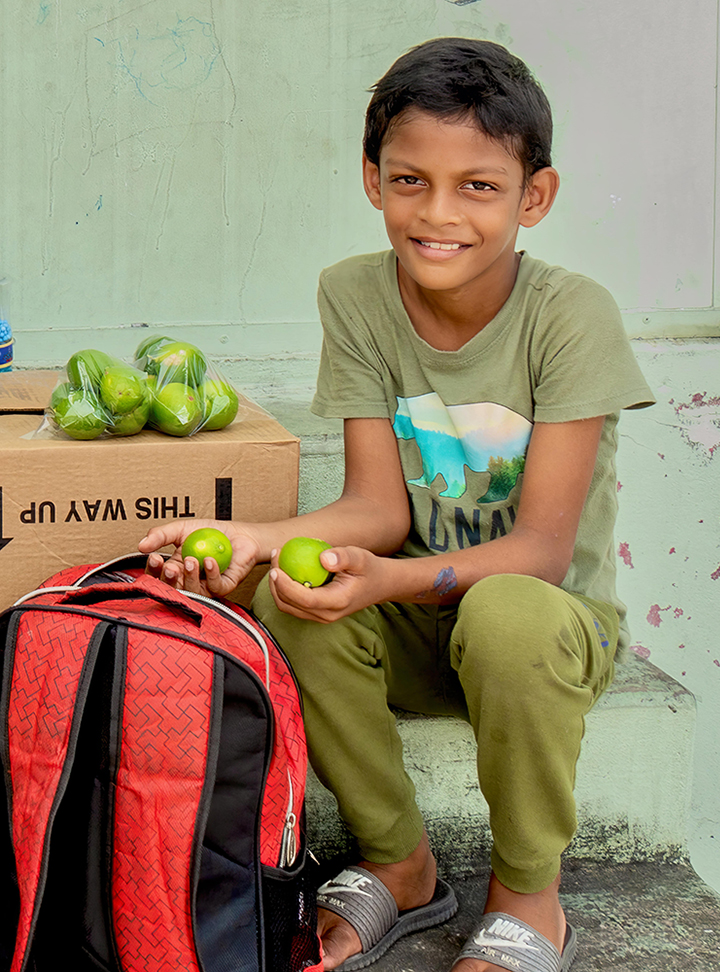
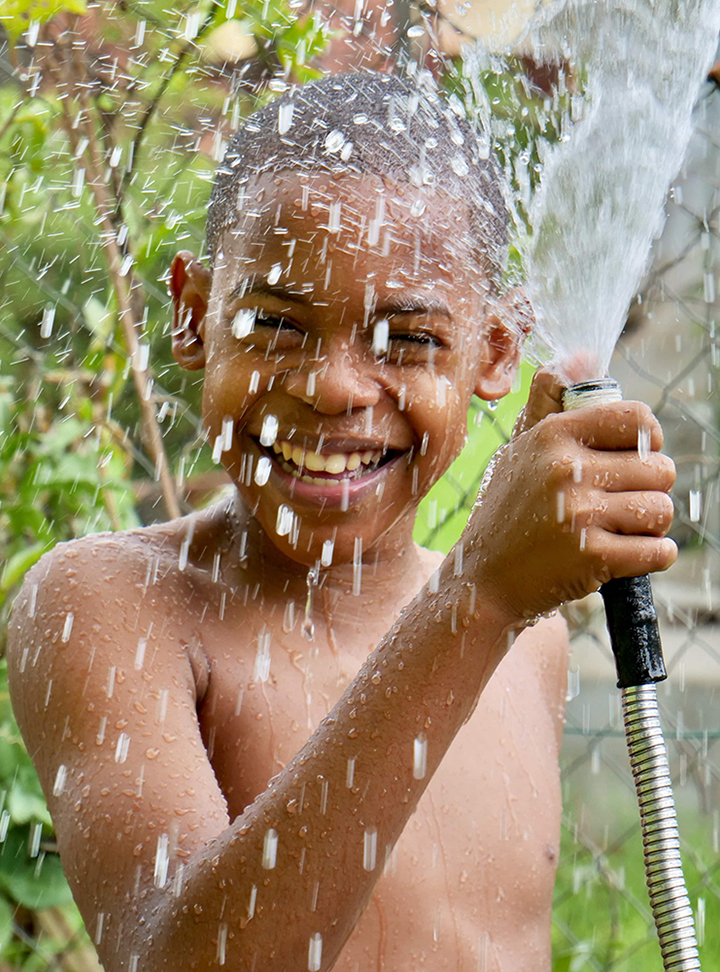
Live in a Safe and Clean Environment
- The population of Trinidad and Tobago had almost universal access to basic drinking water and at least 78% had access to basic sanitation and hygiene services.
- While the availability of a handwashing facility on premises with soap and water at national level was 78%, about 14% of the households did not give interviewers permission to see.
- The poorest households had the lowest access to basic sanitation services at 83% compared to those belonging to the richest quintile at 99%.
- Of the 1% of households that did not have drinking water on the premises, men collected the water 3 times as often as women and spent less than 30mins collecting that water in almost 80% of those times.
- 13 % of households had E-coli in their source water, while 16 % of households had E-coli in their drinking water.
- E-coli was higher in household drinking (16%) water than at source (13%), most noticeably among the poorest households.
- The ERHA had the least access to sufficient drinking water at 46% compared to TRHA with 85%.
Only 26% of the population was using sanitation services connected to the sewer, with another 73% having septic tanks. - For women 15-49 years who reported menstruating in the last 12 months, 94% were using appropriate materials and had a private place to wash and change at home.
- Younger women aged 15-24 years accounted for almost 4 in 10 women (38%) who did not participate in social activities due to their last menstruation.
Equitable Chance in Life
- 1 out of 10 children (10%) aged 2-17 years had functional difficulty in at least one domain.
- For both age groups 2-4 years and 5-17 years, the percentage of males with functional difficulties in at least one domain was higher than female counterparts.
- Anxiety was the functional difficulty with the highest prevalence among 5-17 year olds (5 %) followed by depression (3 %).
- Disparities existed for functional difficulties for children. Those in the poorest households (16%)and whose mother’s education was lower secondary (19%), were more than 3 times as likely to experience functional difficulties than children in the richest households (5%) and those whose mothers education was higher (6%), respectively.
- The NCRHA had the highest prevalence of children with functional difficulties in the 2-4 age group (4%), while the ERHA had the highest prevalence of children with functional difficulties in the 5-17 age group (12%).
- 25% of children who use corrective equipment/assistance for walking experienced functional difficulty , as opposed to children who wore glasses (1%) and children who used hearing aids (11%).
